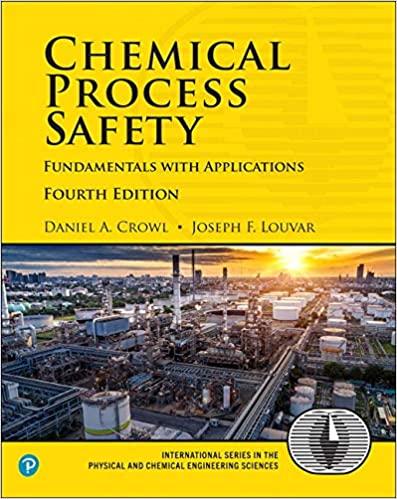For sonic flow through a hole, the mass flow rate is a function of the upstream pressure
Question:
For sonic flow through a hole, the mass flow rate is a function of the upstream pressure only. This can be used to design a flow meter with the unique feature that the flow is not affected by downstream pressure fluctuations.
A laboratory experiment requires a constant mass flow rate of methane of \(0.1 \mathrm{~g} / \mathrm{s}\). What is the largest hole diameter (in \(\mathrm{mm}\) ) required to just produce sonic conditions at this flow rate? Of course, sonic flow conditions will occur at any hole diameter smaller than this.
Assume the methane is available at a regulated pressure of \(10 \mathrm{barg}\), an ambient pressure of \(1 \mathrm{~atm}\) and a temperature of \(25^{\circ} \mathrm{C}\).
Step by Step Answer:

Chemical Process Safety Fundamentals With Applications
ISBN: 9780134857770
4th Edition
Authors: Daniel A. Crowl, Joseph F. Louvar





